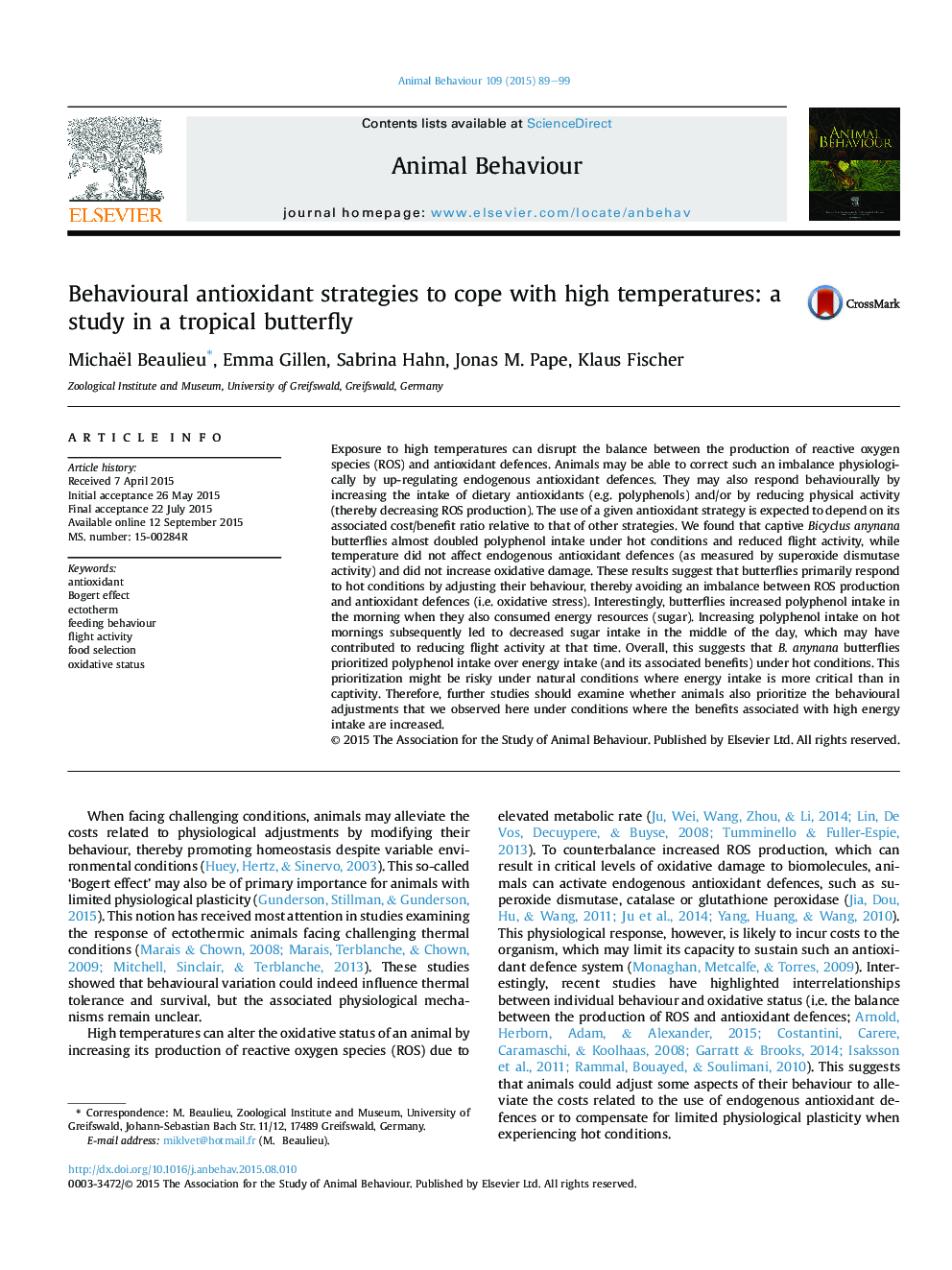| کد مقاله | کد نشریه | سال انتشار | مقاله انگلیسی | نسخه تمام متن |
|---|---|---|---|---|
| 8489575 | 1552219 | 2015 | 11 صفحه PDF | دانلود رایگان |
عنوان انگلیسی مقاله ISI
Behavioural antioxidant strategies to cope with high temperatures: a study in a tropical butterfly
ترجمه فارسی عنوان
استراتژی های آنتی اکسیدانی رفتاری برای مقابله با درجه حرارت بالا: مطالعه در پروانه گرمسیری
دانلود مقاله + سفارش ترجمه
دانلود مقاله ISI انگلیسی
رایگان برای ایرانیان
کلمات کلیدی
موضوعات مرتبط
علوم زیستی و بیوفناوری
علوم کشاورزی و بیولوژیک
علوم دامی و جانورشناسی
چکیده انگلیسی
Exposure to high temperatures can disrupt the balance between the production of reactive oxygen species (ROS) and antioxidant defences. Animals may be able to correct such an imbalance physiologically by up-regulating endogenous antioxidant defences. They may also respond behaviourally by increasing the intake of dietary antioxidants (e.g. polyphenols) and/or by reducing physical activity (thereby decreasing ROS production). The use of a given antioxidant strategy is expected to depend on its associated cost/benefit ratio relative to that of other strategies. We found that captive Bicyclus anynana butterflies almost doubled polyphenol intake under hot conditions and reduced flight activity, while temperature did not affect endogenous antioxidant defences (as measured by superoxide dismutase activity) and did not increase oxidative damage. These results suggest that butterflies primarily respond to hot conditions by adjusting their behaviour, thereby avoiding an imbalance between ROS production and antioxidant defences (i.e. oxidative stress). Interestingly, butterflies increased polyphenol intake in the morning when they also consumed energy resources (sugar). Increasing polyphenol intake on hot mornings subsequently led to decreased sugar intake in the middle of the day, which may have contributed to reducing flight activity at that time. Overall, this suggests that B. anynana butterflies prioritized polyphenol intake over energy intake (and its associated benefits) under hot conditions. This prioritization might be risky under natural conditions where energy intake is more critical than in captivity. Therefore, further studies should examine whether animals also prioritize the behavioural adjustments that we observed here under conditions where the benefits associated with high energy intake are increased.
ناشر
Database: Elsevier - ScienceDirect (ساینس دایرکت)
Journal: Animal Behaviour - Volume 109, November 2015, Pages 89-99
Journal: Animal Behaviour - Volume 109, November 2015, Pages 89-99
نویسندگان
Michaël Beaulieu, Emma Gillen, Sabrina Hahn, Jonas M. Pape, Klaus Fischer,
